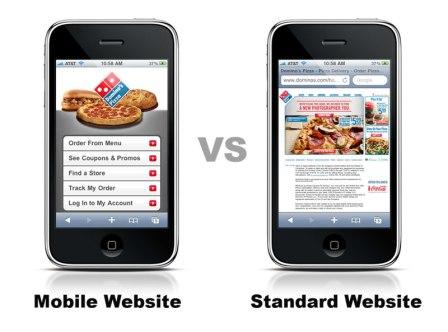Let's start with some statistics from The Pew Research Center's Internet & American Life Project:
- 85% of American adults age 18 years or older access the Internet on a daily basis
- 91% of American adults own a cell phone and 35% own a tablet or e-reader
- 63% of American adult cell phone owners primarily use their phones to search the Internet
Responsive Web Design (RWD)

A RWD website aims to create a site with the optimal viewing experience across a wide range of devices. Easy reading, minimum resizing, scrolling, or panning, and easy navigation are all features of an RWD website. Perhaps the most important feature is that this is a singular site, which has the ability to simultaneously adjust from a desktop browser to a mobile phone Internet search.
PROS
- Save money and time by only designing one site vs. paying to design a desktop and mobile site
- Manage only one set of content. When you update an RWD website, you are updating all of your web information. Site updates only have to be performed once; RWD websites will automatically adjust (with the aid of a few formatting rules and additional images) to the different web platforms.
- Comfort knowing that your site will be properly viewed on any Internet device.
- Long download times, especially on mobile devices, due to HTML coding and JavaScript content.
- Streamlined version of both desktop and mobile sites. This creates a limited opportunity for targeting a specific user. For example desktop users shopping on ecommerce sites are more likely to take their time to find a product. In the latter scenario, mobile users are more likely to have a specific product in mind, and subsequently want faster access to that product. RWD websites limit the ability to differentiate between users, and thus limit the ability to effectively market to users.
- Not all devices support CSS3 (the version of CSS code needed to create RWD websites), which causes these older devices to use the “desktop version” of the RWD site, resulting in slow loading times.
Mobile Friendly

PROS
- Target specific users. Mobile device users want to reach information more quickly than on a desktop site – mobile friendly sites allow for this exchange.
- Customize site to add easy email and phone links.
- Optimal load times.
- Site is designed for specific mobile device(s) pixel count(s). In short, the mobile site should load perfectly on any device.
- Pay for the development of two different sites (desktop and mobile sites are developed individually).
- Users must adapt to a different website layout. The change in site layout, from desktop to mobile, might be off-putting to some users.
- Multiple site updates must be completed. The desktop and mobile site have to be updated separately, which takes more time and money than updating an RWD website.
- Mobile websites must be checked across all devices. Occasionally a mobile website will not load properly on an iPhone, but it will load correctly on the Samsung Galaxy or Blackberry devices.
After reading this blog article, which option did you concluded is best for you and why? Sharing you thoughts.










